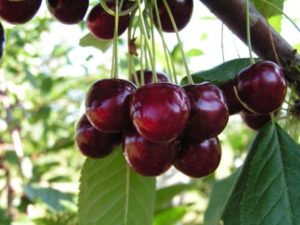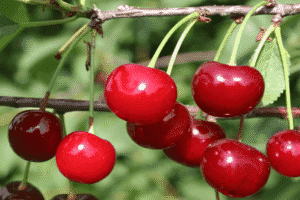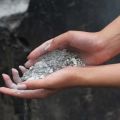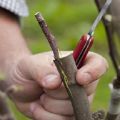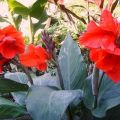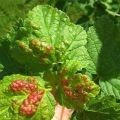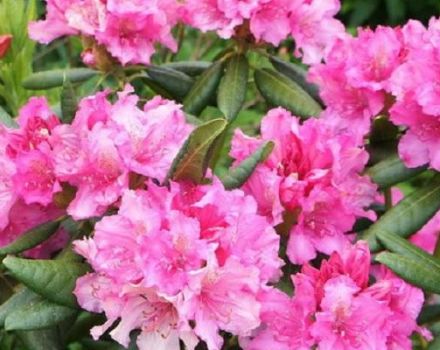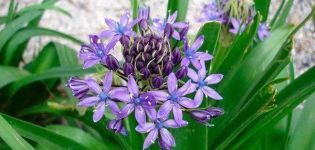How to care for cherries in summer, fall and spring after harvest
Cherry trees are frequent "inhabitants" of suburban areas. The secret of their popularity among our gardeners is their simplicity and good harvest. To get it every year, you need to take care of the trees. Caring for cherries requires knowledge of the characteristics of its physiology and biochemical processes. Activities to increase fertility begin from the moment of planting and are performed at a specific time.
What does complete wood care include?
Cherry tree maintenance is easy even for novice gardeners. The main activities that need to be carried out annually in the garden where cherries and cherries grow are regular and moderately abundant watering of trees, their pruning and protection from diseases and pests, as well as removing weeds and introducing nutrients into the soil.
To achieve good fertility indicators, you need to know about the intricacies of care that is required for old and young plants, as well as about which months it is better to carry out certain activities.
Watering
Cherry trees are especially in need of regular watering in the first years after planting in the country. It is believed that the plant should be watered, on average, 12 times in one season. At the same time, one should be guided by weather conditions and, depending on them, increase or decrease the frequency of irrigation.
After the calendar year has passed, the first watering should be done after the tree has bloomed, the second - at the time of pouring the berries.
The amount of moisture should be such that the soil is moistened to a depth of about 40 centimeters. Watering each tree requires about 3 to 6 buckets of water. To determine exactly how many times you need to water the plants, you will have to take into account the amount of natural precipitation.
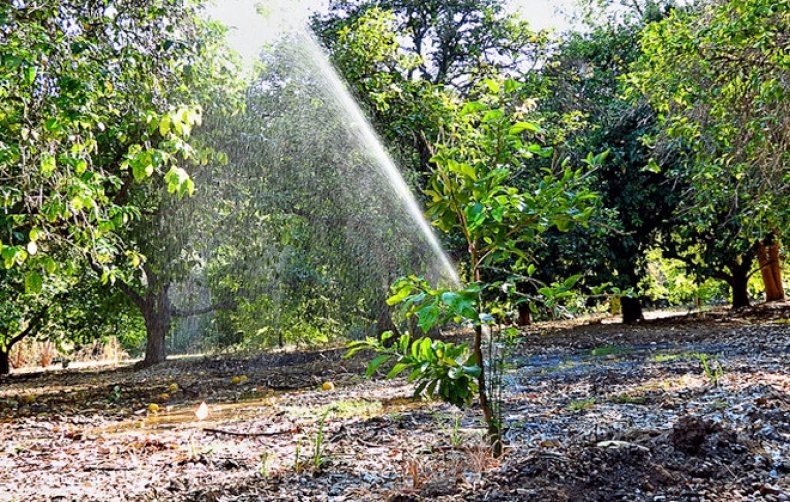
In the fall, after the leaves have fallen off, winter watering is carried out, during which the soil is poured to a depth of 80 centimeters. Thanks to this moisture, the root system prepares for a successful wintering, and the soil does not freeze as quickly as dry.
Top dressing
To get a good harvest from a cherry tree, it must be fed regularly. Like other green dwellers in the garden, these plants need mineral and organic fertilizers.
Fertilization work begins in early spring, even before the flowers bloom on the tree. Urea or calcium nitrate is used as top dressing. 60 grams of urea or 2 tablespoons of nitrate is scattered over the entire surface of the trunk circle, then the soil is loosened. Such procedures are correct and favorable for growth and flowering.
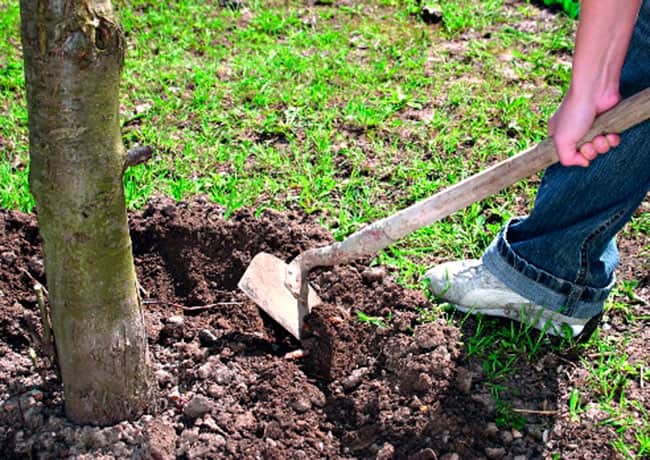
When flowers appear, it is time to apply nitrogen and organic fertilizers, for example, bird droppings or cow dung. After flowering, the cherries can be sprayed with urea. To do this, 40 grams are diluted in 10 liters of water. Spraying like this helps to maintain ovaries and improves tree nutrition.
Pruning
Pruning helps to intensify cherry growth. The first time this procedure is carried out after swollen buds appear on the tree. If you miss this moment, then it is better to cancel pruning altogether so as not to injure the plant. In the spring, first of all, the removal of frozen shoots is performed. After it, the slices should be processed.

Shoots less than 40 centimeters long do not need pruning. To prevent the crown from being too dense, it is enough to eliminate competing branches, as well as get rid of the shoots directed vertically. Crown-shaping pruning can be done during the summer months after picking the berries.
Pest control
Cherries, like most other members of the Pink family, are susceptible to many diseases. Most often, the tree is affected by fungal and bacterial diseases. Therefore, care involves the regular use of insecticidal and fungicidal preparations.
The basic rules for the prevention of cherry diseases are:
- whitewashing of trunks in the spring;
- several treatments to protect against disease during the season;
- compliance with sanitary standards.
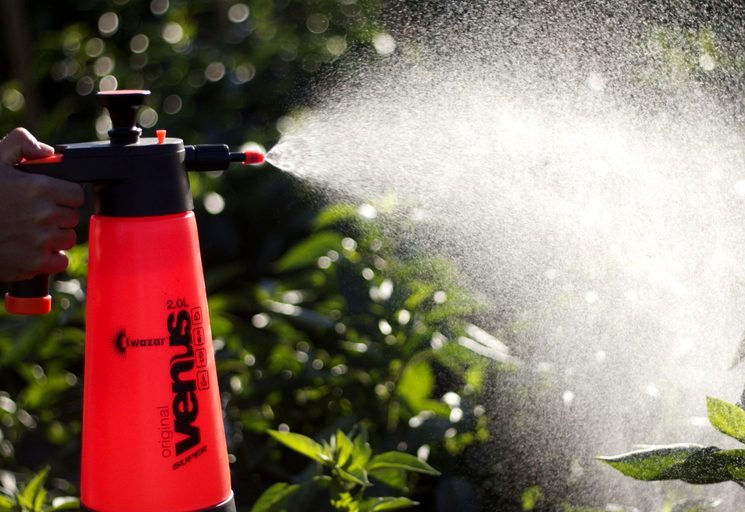
Seasonal nuances
Cherry trees should be cared for from the moment they are planted. Moreover, the nature of the work changes during the season. Each period has its own subtleties.
Spring
Cherry care activities carried out in the spring help to obtain a rich harvest. During this period, trees are pruned, getting rid of:
- dried or frozen branches;
- too long shoots;
- parts damaged by pests and diseases.
In March, cherry trunks must be whitened, and the wounds on the bark must be treated with copper sulfate. This creates protection against parasites and bark damage.

In the near-stem circle, dry grass should be removed, soil should be dug so that the root system receives oxygen. And finally, fertilization is a must-have item for spring care.
Summer
The peculiarities of summer care are associated with the fact that berries ripen at this time, gardeners harvest. Trees of early varieties bear fruit in June, other representatives of the species delight in harvest in July. In the same month and in August, the time of the highest activity of the sun comes. Therefore, plants have an increased need for moisture. They need to be irrigated regularly.
In addition, to prevent the soil from drying out, gardeners resort to mulching. This prevents moisture evaporation, and also prevents infestation with various diseases and pests.
Autumn
Autumn is the time when cherries need to be prepared for wintering. Caring for her is pruning and feeding, disease prevention.
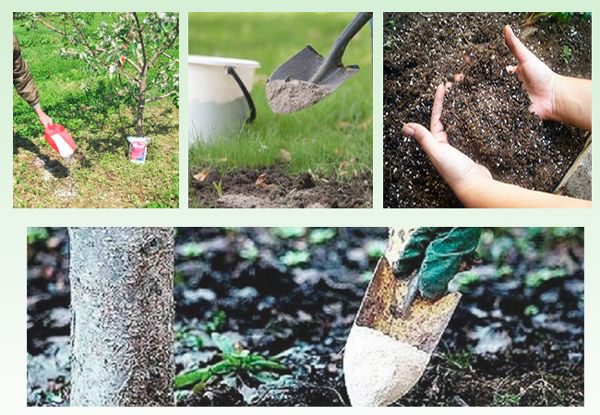
You can prune before the first frost. But only after the tree enters a dormant period. It aims to remove dry or diseased shoots. All cuts, cracks and wounds should be treated. The soil in the near-trunk circle must be cleaned and loosened. During these events, you can enrich it with potash and phosphorus fertilizers. The trunks can be whitewashed to protect against rodents.
Care features
The nuances of proper cherry care take into account not only the condition of the tree and weather conditions in a particular region, but also the age of the plant.
For young seedlings
In the first year after planting, seedlings need careful watering. During the hotter months, each cherry needs 5-6 buckets of water. In addition, plants need protection from pests.Their bark is very thin; it cannot serve as a reliable protection against harmful insects.

For prevention purposes in spring and summer, cherries should be sprayed with Bordeaux liquid or copper sulfate.
Fruiting cherry
In order to get rich yields of berries from a fruiting tree, during the period of their formation, you must adhere to the following care tips:
- in a rainy spring, spray the cherries with a solution of water and honey - this will help attract insects to the garden plot;
- in a drought, it is necessary to provide the cherry with a large amount of moisture;
- monitor the acidity of the soil to preserve the ovaries;
- after the end of the harvest, at the end of September, water the cherries abundantly, pouring 8-10 buckets of water into the trunk circle;
- in the fall, potash and phosphorus fertilizers should be applied;
- it is necessary to monitor the condition of the crown, thinning it from time to time;
- during the growing season to prevent the reproduction of pests.

When picking a crop from a fruiting cherry, it is worth remembering that the plucked berries do not ripen and remain sour and tasteless.
Old tree
Maintenance of old cherry trees includes cleaning, burning off dead bark, whitewashing and pruning. The age of the cherry gives rise to the appearance of coppice basal shoots. The more intensively they grow, the lower the viability of the plant becomes. This growth must be removed regularly. Sick, dry and damaged branches should also be disposed of.
How to prepare a tree for winter
Cherry belongs to frost-resistant plants. Nevertheless, protection from frost, in most regions, is necessary for it. Prepare for winter in advance. To do this, in the fall, the ground around the trunk can be covered with straw or sawdust. This will protect the root system from freezing. The pre-winter soil spill serves the same purpose. After that, the soil is mulched with peat or manure.
Experienced gardeners recommend, on the eve of the winter cold, "wrap" the trunks of young cherries with pine spruce branches.
Cuts and wounds remaining after pruning must be treated with garden varnish. Woven materials can be used to protect the trunks. This prevents rodents and other animals from damaging the bark. Knowledge of the basic rules of care and their timely application will allow you to enjoy the pinkish caps of flowering cherries in your own garden in spring and the harvest of fragrant berries in summer.
